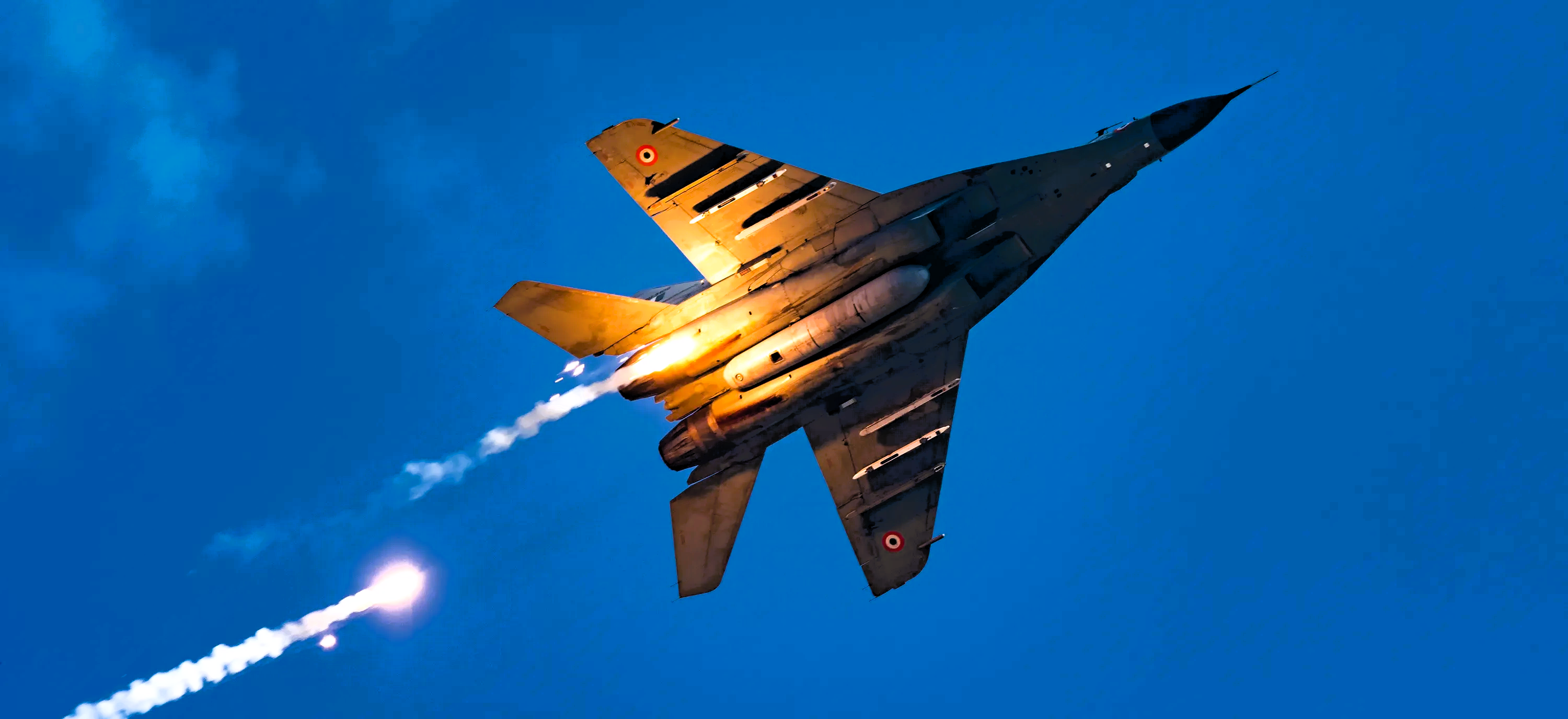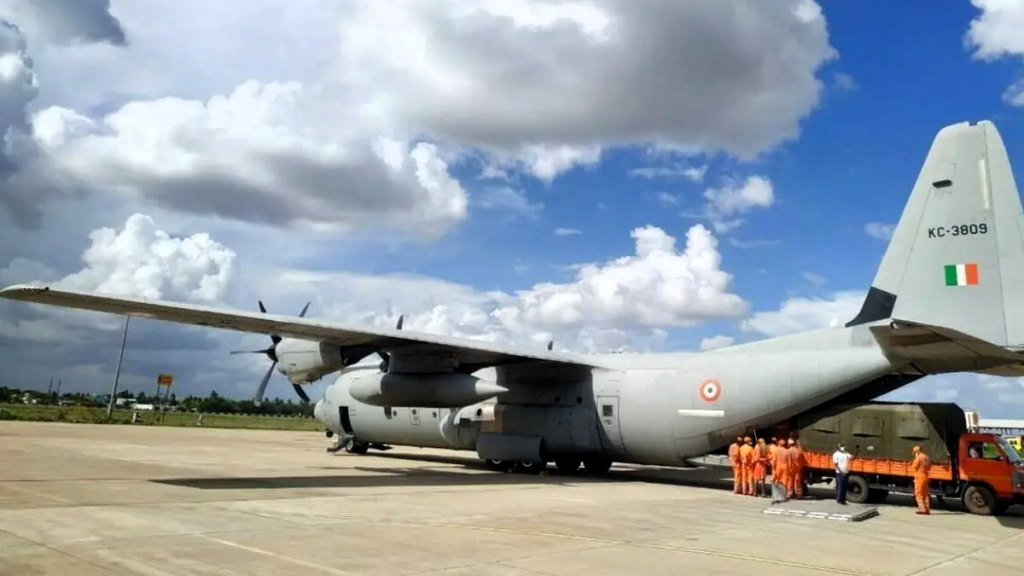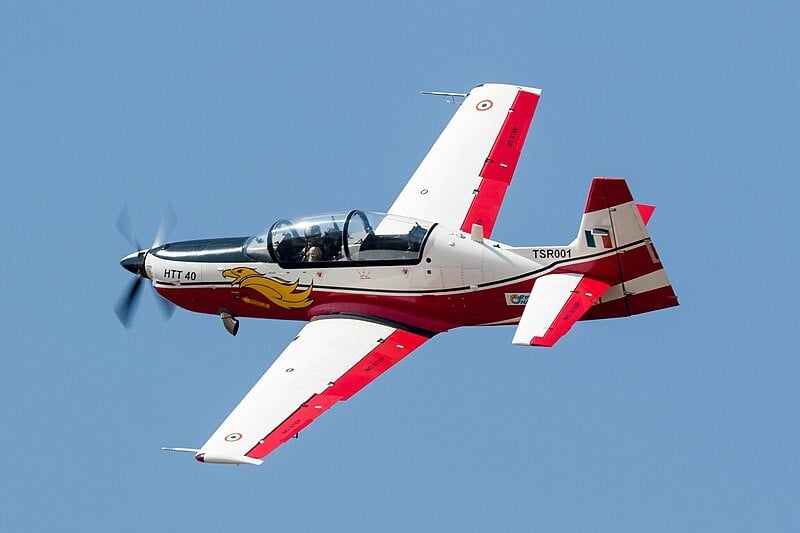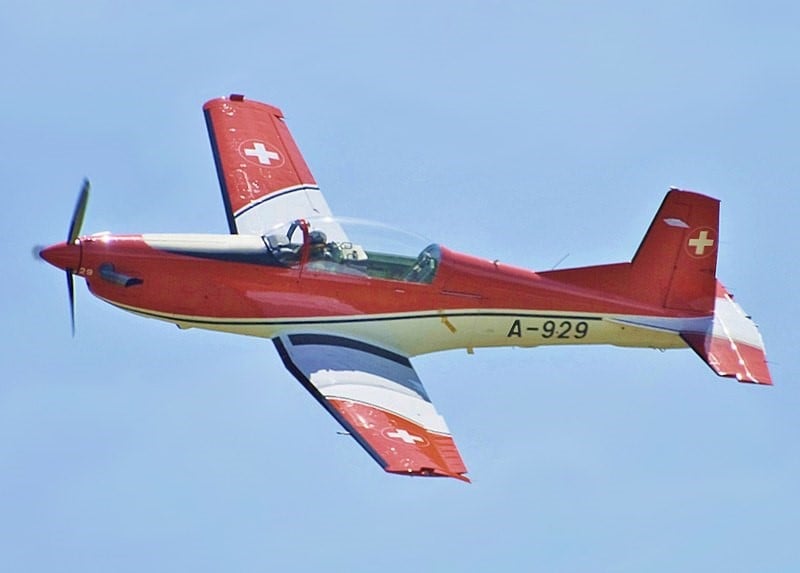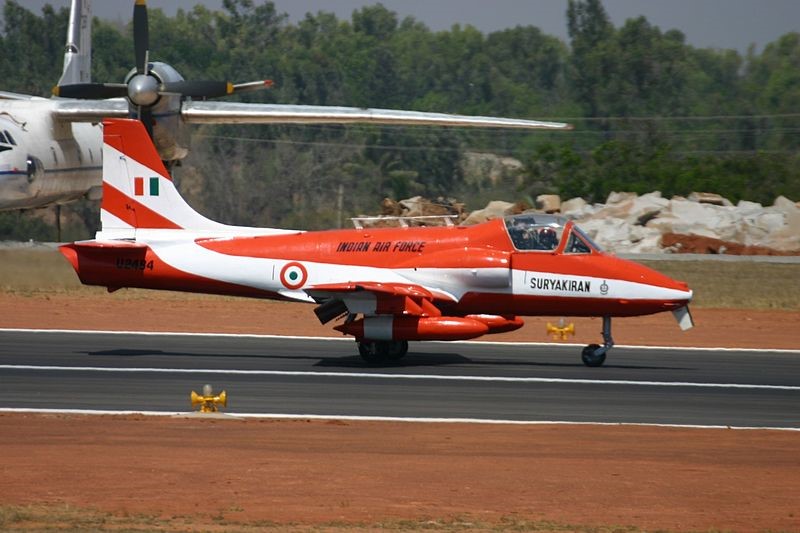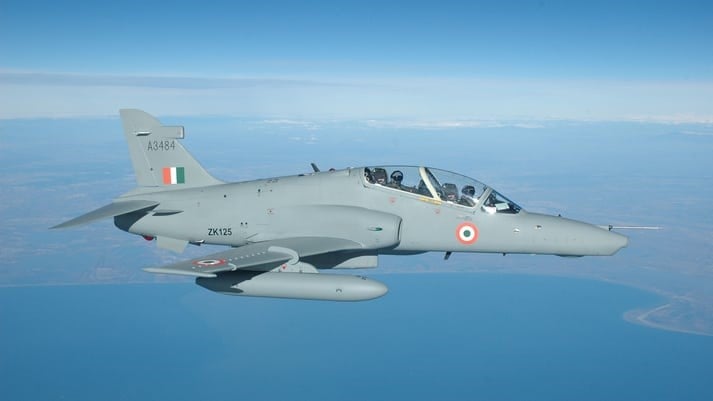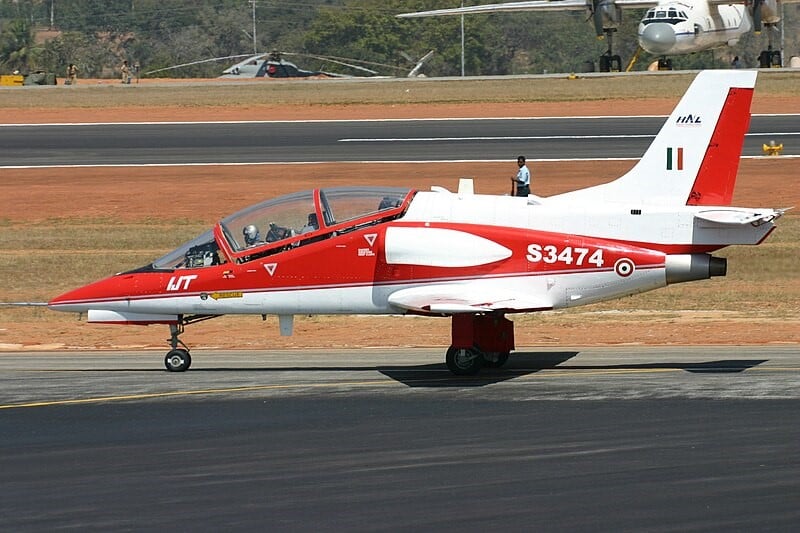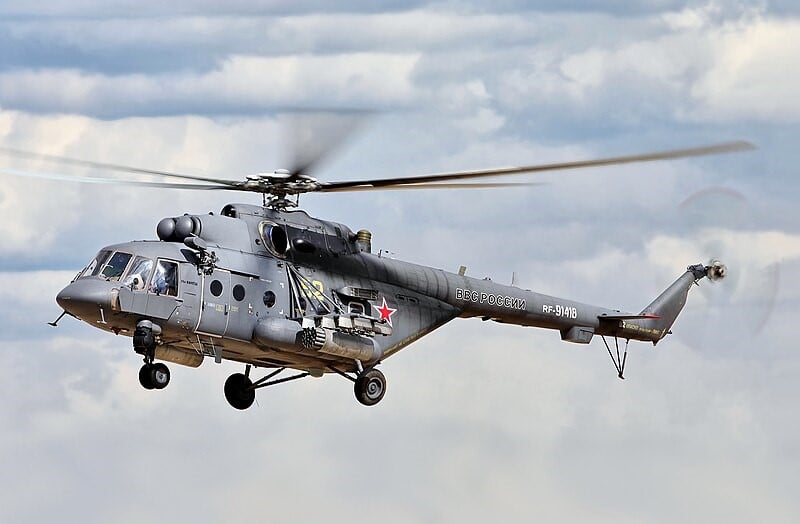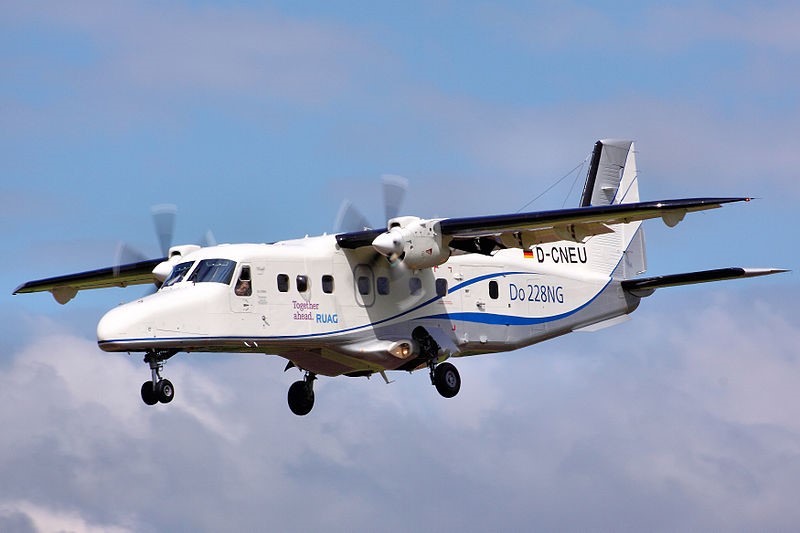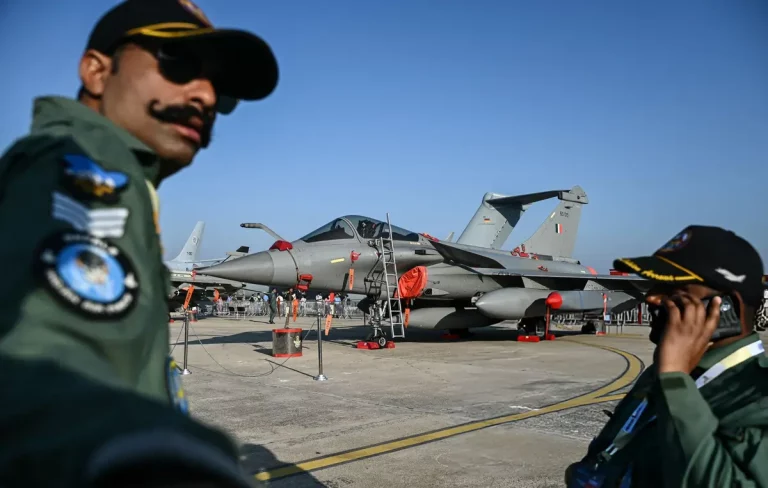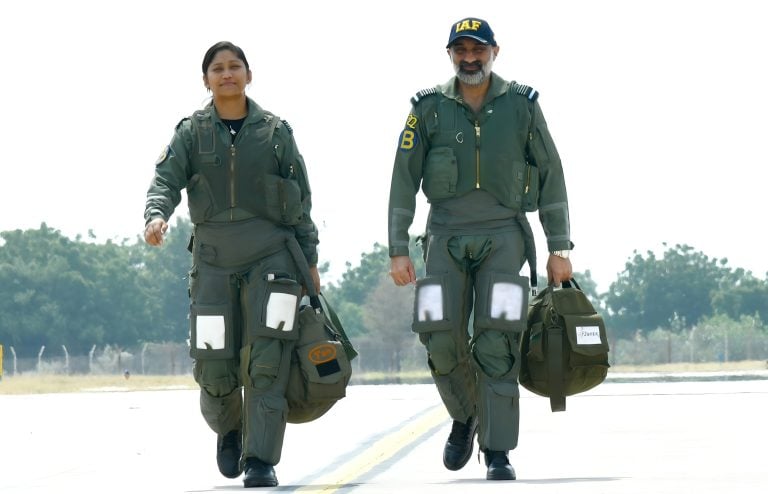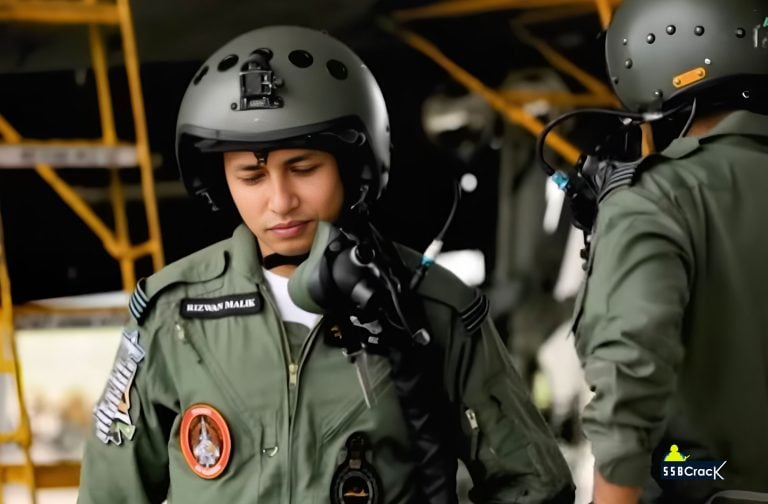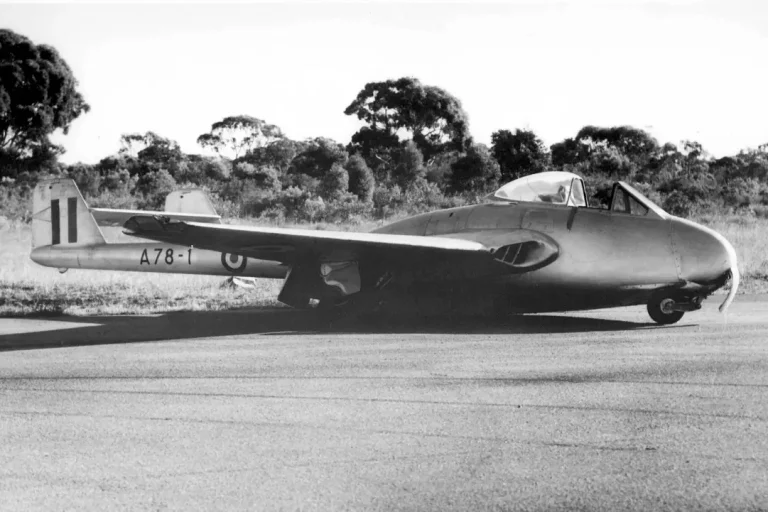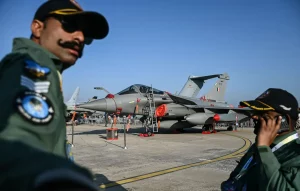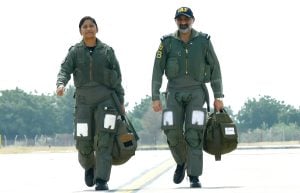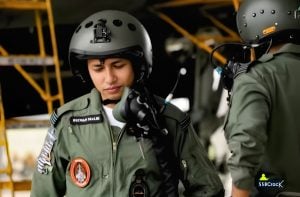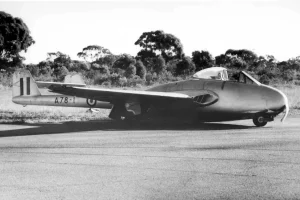Training fighter pilots for the Indian Air Force (IAF) is an intricate and gradual process, requiring expertise and proficiency in handling various aircraft. The IAF employs a fleet of specialized aircraft designed for the different phases of pilot training. These aircraft, varying in complexity, performance, and design, ensure that pilots are progressively trained to handle the advanced fighter jets and transport helicopters that form the backbone of the Indian Air Force.
In this comprehensive article, we will explore the The Aircraft Used by Indian Air Force to Train its Pilots, each designed to provide aspiring pilots with the necessary skills at various stages of their training journey. The aircraft include:
- Hindustan Turbo Trainer-40 (HTT-40)
- Pilatus PC-7 Mark II
- HAL Kiran Mk-I/IA
- BAE Systems Hawk Mk132
- Hindustan Jet Trainer 36 (HJT-36)
- Mi-17 Helicopter
- Dornier Do-228
Also Read | Difference Between Indian Air Force X Group and Y Group
Introduction to Pilot Training in the Indian Air Force
Before delving into the specific aircraft used in IAF training, it’s essential to understand the structure of the pilot training program. Indian Air Force pilots undergo an extensive training process divided into different stages:
- Basic Flying Training: The first stage where cadets learn basic flying skills, aerodynamics, and how to manage an aircraft.
- Intermediate Flying Training: At this stage, cadets are introduced to more advanced concepts such as aerobatics, formation flying, and more complex maneuvers.
- Advanced Flying Training: In the final stage, pilots train on jet aircraft to master air combat techniques, weaponry, and more.
Each of these stages involves flying specific training aircraft suited for the training objective.
1. Hindustan Turbo Trainer-40 (HTT-40)
Overview
The Hindustan Turbo Trainer-40 (HTT-40) is a modern basic trainer aircraft designed and manufactured by Hindustan Aeronautics Limited (HAL) for the Indian Air Force. It serves as a vital aircraft for cadets in their initial phase of pilot training.
Features and Specifications
- Engine: The HTT-40 is powered by a turbo-prop engine providing adequate thrust and performance for basic training.
- Performance: The aircraft can achieve speeds of up to 450 km/h and has a maximum endurance of four hours, making it suitable for longer training sorties.
- Cockpit: Equipped with a modern glass cockpit, it features advanced avionics and training systems that simulate scenarios for novice pilots.
- Training Capability: The HTT-40 offers a forgiving flight characteristic, making it ideal for basic flying skills, aerobatics, and instrument flying.
Role in IAF Training
The HTT-40 replaced the older piston-engine trainers and provides cadets with the necessary foundation in flying. It serves as the primary trainer aircraft for ab initio pilot training, teaching cadets basic flight principles, handling, and navigation.
2. Pilatus PC-7 Mark II
Overview
The Pilatus PC-7 Mark II is a highly regarded Swiss-manufactured basic trainer aircraft, widely used across air forces globally. The Indian Air Force adopted the Pilatus PC-7 Mark II to meet the need for an efficient and reliable basic trainer.
Features and Specifications
- Engine: The aircraft is powered by a single Pratt & Whitney PT6A-25C turboprop engine.
- Performance: It has a maximum speed of 556 km/h and a range of 1,500 kilometers, which is well-suited for extensive basic flight training missions.
- Cockpit: The cockpit is equipped with modern flight instrumentation and navigation systems, helping cadets to grasp advanced aviation concepts early in their training.
- Maneuverability: It features excellent maneuverability, allowing cadets to learn aerobatics and low-speed handling.
Role in IAF Training
The PC-7 Mark II was inducted into the IAF to bridge the gap in basic pilot training. It plays a critical role in training beginner pilots, helping them gain confidence in handling an aircraft, performing basic aerobatics, and understanding flight theory. Its ease of use, combined with its capability to mimic advanced flight scenarios, makes it a perfect stepping stone before transitioning to more complex aircraft.
3. HAL Kiran Mk-I/IA
Overview
The HAL Kiran Mk-I/IA is an Indian intermediate jet trainer aircraft developed by Hindustan Aeronautics Limited. It has been a vital part of the IAF’s training fleet for several decades, providing essential intermediate flying training.
Features and Specifications
- Engine: Powered by a Rolls-Royce Viper turbojet engine, the Kiran Mk-I/IA is a subsonic jet trainer.
- Performance: It can reach speeds of up to 695 km/h and has a range of 1,000 km.
- Cockpit: The aircraft comes with basic instrumentation to help pilots transition from propeller-driven trainers to jet-powered aircraft.
- Armament: Some versions of the Kiran are equipped with light armament, enabling weapon training for pilots.
Role in IAF Training
The Kiran Mk-I/IA is used in intermediate training programs to teach cadets more complex flying techniques, including formation flying, tactical navigation, and basic jet handling skills. While primarily serving as a trainer, the Kiran also has light combat capabilities, allowing it to be used for gunnery and weapons training exercises.
Also Read | 10 Tips to Crack AFCAT 2025 with Self Preparation
4. BAE Systems Hawk Mk132
Overview
The BAE Systems Hawk Mk132 is an advanced jet trainer aircraft developed in the UK and assembled under license by Hindustan Aeronautics Limited (HAL). This aircraft plays a pivotal role in advanced jet training within the Indian Air Force.
Features and Specifications
- Engine: The Hawk Mk132 is powered by an Adour Mk 871 turbofan engine, giving it excellent thrust-to-weight ratio and handling characteristics.
- Performance: With a maximum speed of 1,028 km/h and a service ceiling of 13,565 meters, the Hawk Mk132 is highly capable for advanced pilot training.
- Cockpit: It features a fully digital cockpit with advanced avionics, Head-Up Display (HUD), and Multi-Function Displays (MFDs), offering cadets an introduction to the systems used in front-line fighter jets.
- Maneuverability: The Hawk is highly agile, allowing trainees to practice advanced aerial maneuvers and combat techniques.
Role in IAF Training
The Hawk Mk132 is the final aircraft that fighter pilot cadets fly before they are transitioned to front-line combat aircraft such as the Su-30MKI, Tejas, or Mirage 2000. This advanced jet trainer is used to teach combat tactics, air-to-air and air-to-ground weapon systems, and formation flying at high speeds.
5. Hindustan Jet Trainer 36 (HJT-36)
Overview
The Hindustan Jet Trainer 36 (HJT-36) is an intermediate jet trainer developed by HAL, intended to replace the aging Kiran aircraft. The HJT-36 is currently under development and testing, and it aims to modernize the intermediate training process.
Features and Specifications
- Engine: The HJT-36 is powered by a NPO Saturn AL-55I engine.
- Performance: It is designed to achieve a top speed of 750 km/h with a maximum range of approximately 1,000 km.
- Cockpit: Featuring an advanced glass cockpit with digital instrumentation, the HJT-36 introduces trainee pilots to more sophisticated aircraft systems.
- Training Capability: The aircraft is capable of handling advanced training, including air-to-air and air-to-ground combat simulations.
Role in IAF Training
Once fully operational, the HJT-36 will replace the Kiran Mk-I/IA in the IAF’s intermediate flying training program. It will provide cadets with enhanced capabilities in aerobatics, combat maneuvering, and weapons training, ensuring a seamless transition to more advanced trainers like the Hawk Mk132.
6. Mi-17 Helicopter
Overview
The Mi-17 is a multi-role military helicopter used by the IAF for various purposes, including transport, assault, and training. It has become a significant component of helicopter pilot training within the Indian Air Force.
Features and Specifications
- Engine: Powered by two Klimov TV3-117VM turboshaft engines, the Mi-17 offers robust performance and reliability.
- Performance: The helicopter can reach speeds of 250 km/h with a range of 800 km.
- Cargo Capacity: The Mi-17 can transport up to 36 troops or 4,000 kg of cargo, making it a versatile platform for both transport and assault operations.
- Cockpit: The helicopter is equipped with modern avionics, enabling pilots to train in tactical flying and transport missions.
Role in IAF Training
The Mi-17 is primarily used to train helicopter pilots in cargo transport, troop deployment, and search-and-rescue missions. It allows helicopter pilots to experience tactical flying scenarios, including operating in harsh environments and at night, making it crucial for IAF rotary-wing pilot development.
7. Dornier Do-228
Overview
The Dornier Do-228 is a light utility aircraft manufactured by Hindustan Aeronautics Limited under license from Dornier GmbH. It serves a variety of roles within the IAF, including transport, reconnaissance, and pilot training.
Features and Specifications
- Engine: The Do-228 is powered by two Honeywell TPE331 turboprop engines.
- Performance: It can achieve a maximum speed of 428 km/h with a range of 700 kilometers.
- Cockpit: Equipped with a glass cockpit, the Do-228 includes advanced avionics for navigation and communication, providing pilots with essential training in handling light transport aircraft.
- Multi-Role Capability: The Do-228 is versatile, often used in short-haul transport and maritime patrol missions.
Role in IAF Training
The Do-228 serves as a platform for transport pilot training, introducing cadets to multi-engine flying and short takeoff and landing operations. Its utility in various roles, including light cargo transport, search-and-rescue, and reconnaissance, makes it an integral part of the IAF’s transport pilot training program.
Table: Comparison of Key Training Aircraft Specifications
| Aircraft | Type | Engine Power | Maximum Speed | Range | Role in Training |
|---|---|---|---|---|---|
| HTT-40 | Basic Trainer | Turbo-prop | 450 km/h | 1,000 km | Basic flight skills, aerobatics, navigation |
| Pilatus PC-7 Mk II | Basic Trainer | Pratt & Whitney PT6A | 556 km/h | 1,500 km | Basic aerobatics, flight theory |
| HAL Kiran Mk-I/IA | Intermediate Trainer | Rolls-Royce Viper | 695 km/h | 1,000 km | Intermediate flying, formation, basic combat |
| Hawk Mk132 | Advanced Trainer | Adour Mk 871 | 1,028 km/h | 2,520 km | Combat tactics, air-to-air, air-to-ground training |
| HJT-36 | Intermediate Trainer | NPO Saturn AL-55I | 750 km/h | 1,000 km | Aerobatics, combat maneuvering |
| Mi-17 Helicopter | Multi-role Helicopter | Klimov TV3-117VM | 250 km/h | 800 km | Transport, tactical flying |
| Dornier Do-228 | Light Utility Aircraft | Honeywell TPE331 | 428 km/h | 700 km | Multi-engine, short-haul transport training |
Also Read | 10 Tips to Crack AFCAT 1 2025 Exam
Conclusion
The Indian Air Force employs a diverse fleet of training aircraft to develop pilots at every stage of their journey. From basic trainers like the HTT-40 and Pilatus PC-7 Mk II to advanced jets such as the Hawk Mk132, each aircraft plays a critical role in molding cadets into skilled pilots capable of handling the most sophisticated fighter jets, transport planes, and helicopters.
The intermediate trainers like the HAL Kiran and the soon-to-be-inducted HJT-36 bridge the gap between basic and advanced flying. The Mi-17 helicopter and the Do-228 ensure that helicopter and transport pilots are equally well-trained for the demands of the modern battlefield.
These training platforms, combined with rigorous training regimens, ensure that the IAF remains a formidable force, ready to defend the skies.
FAQs
1. What is the role of the HTT-40 in IAF training?
The HTT-40 serves as a basic trainer aircraft used in the initial stage of pilot training to teach basic flight handling, aerobatics, and navigation.
2. How does the Pilatus PC-7 Mark II differ from the HTT-40?
The Pilatus PC-7 Mark II is a Swiss-made trainer used for basic training, offering excellent performance and modern avionics. Both aircraft are used for initial pilot training, but the HTT-40 is Indian-made, while the PC-7 is imported.
3. Why is the Hawk Mk132 important for advanced pilot training?
The Hawk Mk132 introduces pilots to advanced air combat tactics and weapons systems, making it a crucial platform before transitioning to front-line fighters like the Su-30MKI or Tejas.
4. Is the HJT-36 fully operational?
The HJT-36 is still under development and testing but is expected to replace the HAL Kiran in the IAF’s intermediate flying training program once fully operational.
5. How are helicopter pilots trained in the IAF?
Helicopter pilots in the IAF are primarily trained on the Mi-17, a multi-role helicopter that allows them to practice tactical flying, transport missions, and search-and-rescue operations.
